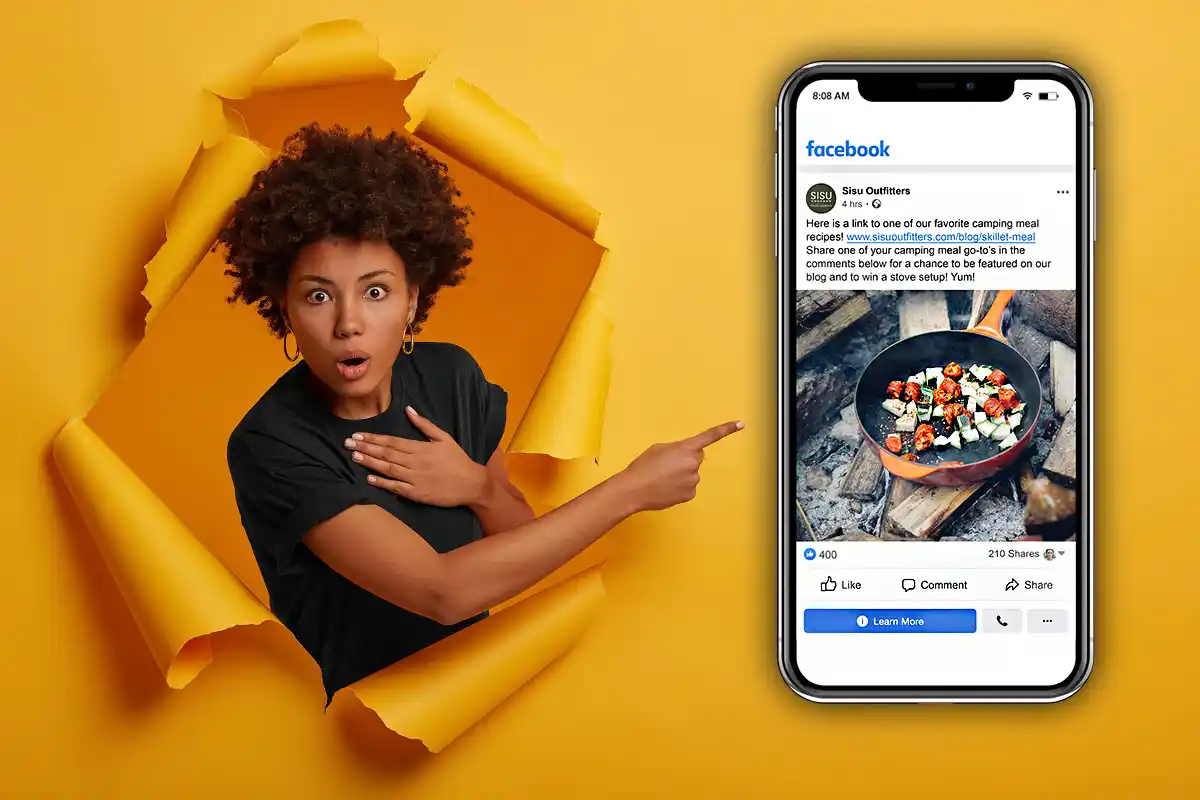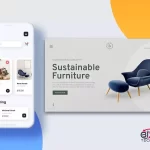Conversions are a key concern for many marketers. One of the strongest indicators of success is conversion rate, which is essential to generating a significant return on investment. Making good Facebook advertisements is a crucial component of any social media strategy since Facebook is the most effective social media platform for generating conversions.
Instagram and Facebook ads can both be seen at the same time. Due to its traffic growth over time, it is becoming a potent instrument for advertisements.
More than 27% of social media users have acknowledged using paid social marketing to discover new businesses and items.
One of my personal favorites for running advertisements across the full client experience is Facebook Ads. The potential is unlimited because there are so many different targeting options and places.
When done correctly, you can prospect, re-engage, and convert with minimal expense. You may use Facebook to create quality leads and direct them toward the ultimate purchase if you know how to make the most of these capabilities. But don’t take my word for it; put these to the test right away to boost your earnings.
Target News Feed
Facebook users are not actively seeking things, in contrast to the folks you target with Google Ads. Their purchase intent on the news feed is at zero since they are scrolling through their friends’ vacation photos and watching videos of pets dressed absurdly.
Therefore, in all of your advertisements, avoid going straight for the sale. Start by focusing on soft conversions (such as website visitors and email subscriptions) on the News Feed that you can nurture through the purchasing process using email marketing, retargeting, and the other strategies we’ll be looking at today.
You should utilize reasonably broad targeting choices and messages to attract this type of lead. Consider using eye-catching, branded advertisements with little to no text that play on people’s basic needs, such as hunger, lust, escapism, earning money, saving money, earning respect from peers, etc.
Create Attractive Visuals
A user’s eye makes its decision on where to rest on a webpage in just 2.6 seconds. The likelihood that their eyes will fall on your advertisement improves when eye-catching imagery is used. Design influences most initial impressions, therefore approach aesthetics like a handshake.
Create captivating visuals for your advertising to get more conversions and boost the likelihood that people will engage with them.
Don’t add too much text to the photographs. In fact, Facebook advises against using any text at all in photos.
Call-To-Action (CTO)
A compelling call-to-action is crucial for conversion, which strives to increase traffic. Having a compelling call to action is crucial since conversions are all about inspiring actions. If your conversion objective is for people to visit a product page or learn more about your business, strong verbs like begin, discover, find, and explore are fantastic.
Be clear with words like “buy now” or “sign up” if your aim is to encourage purchases or subscriptions.
Broaden Your Audience
If you choose “targeting expansion” while generating an ad, Facebook will look for more individuals who have the characteristics you’ve listed in the “interest targeting area”. This not only expands your audience, but it also has the ability to increase conversions while decreasing the cost per conversion.
You can also establish Custom Audiences, so keep that in mind. You may submit data sets to Facebook to discover current clients if you have them, such as an email subscriber list.
Take it a step further by using your bespoke audiences to locate Lookalike Audiences, which are fresh people with profiles comparable to those of your clientele.
Optimize for Conversions
Once a user clicks on your advertisement, you have already paid for that traffic, and every lead that is lost costs you money. Your website must be optimized for conversions at this point, otherwise, your traffic budget will be wasted.
How to Optimize Your Facebook Ad Campaigns?
This begins with landing pages that motivate visitors to act, and you can find advice on this in some of our most recent blogs on best practices for landing pages. Remember that the majority of your Facebook leads will come from mobile devices, therefore you must have quick, mobile-friendly sites. Pay special attention to your online forms as well to make sure conversions aren’t being hindered. To reduce the number of leads you lose, use a good form optimization tool to identify any issues your forms are causing and fix them.
Choose the Right Ad Format
A successful advertising campaign may be largely attributed to the choice of the appropriate ad type, which can increase conversion rates. Various Facebook ad formats may better suit your needs than others depending on the objectives of your campaign.
When you want to promote a variety of features or many items, carousel and collection advertising are perfect.
You may advertise special offers or discounts on Facebook that you can use as a purchasing incentive. Facebook will notify those who have visited the advertisement to redeem it.
Facebook Canvas advertisements work best for powerful images and immersive experiences that look good on full screen.
Remarket Engagement
As you’ve already realized, Facebook offers a variety of retargeting options, all of which have the potential to be quite beneficial. In addition to the abundance of alternatives, Facebook is known for being a very affordable medium for re-engagement. Remarketing engagement is one of the most affordable methods of remarketing.
This approach is not only affordable, but it also enables you to re-engage prospects who may have never visited your website, meaning that this may be your last chance to do so.
Although it may appear that you have optimized your advertisements to the furthest extent possible in order to increase conversions, you must continue to run additional ads in order to maintain the growth of your business.
The advantage of this is that you won’t have to start over. Due to the amount of data your first advertising generated, you will need to launch retargeting or remarketing campaigns to target particular audiences that had previously interacted with your ads but were unable to convert. Retarget them to get them to visit your website again and comply with your requests.
Facebook Pixel
Similar to Google Ads cookies, Facebook Pixel is a tracking code that lets you follow users and target them with remarketing ads. You may monitor user behavior using your conversion targets in this way.
Why and How to Advertise Your Business on Facebook?
By monitoring the activities people do after visiting your website, you can determine how effective your adverts are.
Adjust your bids automatically to target users who are more likely to convert. Use remarketing advertisements to reach past visitors who weren’t converted the first time. Reach out to people who share the same interests as your current clients and leads by using Lookalike Audiences.
Convert Your Analytics into Insights
The same goes for any social media strategy; pay close attention to performance metrics and make necessary adjustments. What was successful and what was not?
Take notes so you can repeat your accomplishment with your subsequent advertising effort.
Your ad costs will significantly decrease and your profit margins will increase if you put some of these recommendations into practice.
Only when your return on ad spending (ROAS) is fair are advertisements effective.
You’re prepared to learn more about other social media advertising strategies now that you understand how to develop a Facebook ad that is optimized for conversions. The basics of conversion are the same regardless of the platform you’re using: make sure the experience is unambiguous, straightforward, constant, and alluring.



